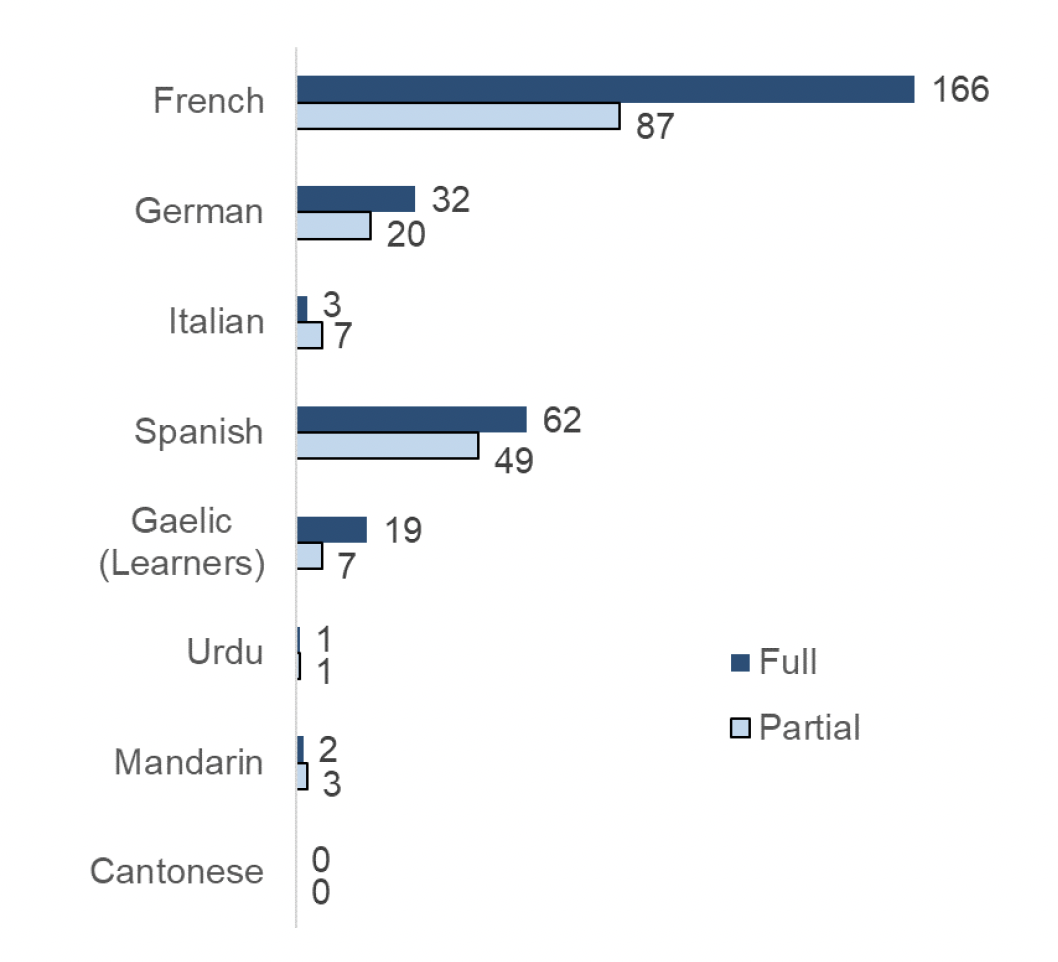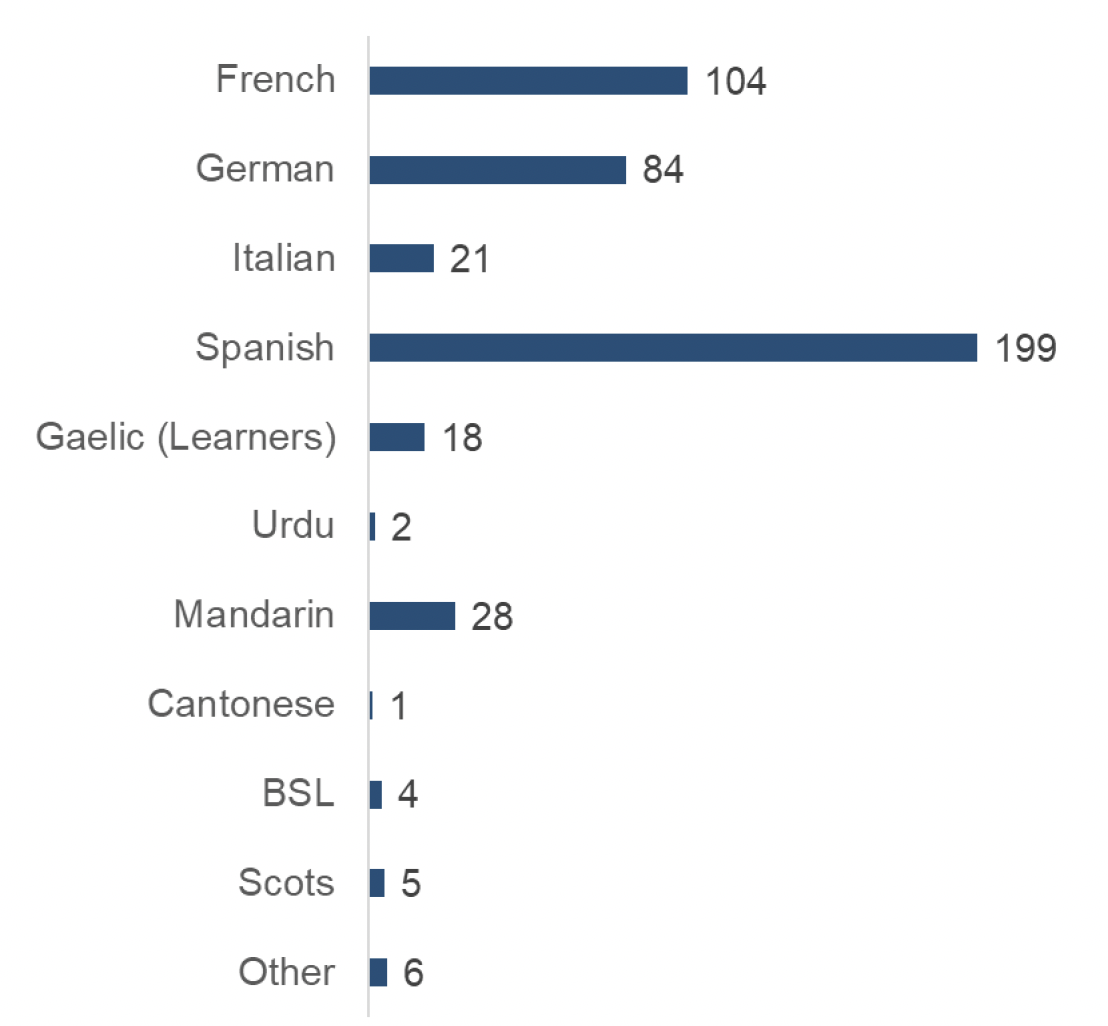1+2 languages policy: findings from the 2023 survey of local authorities
Findings of a 2023 survey of local authorities on the implementation of the 1+2 languages policy in schools. The key finding is that it confirms nearly all primary and secondary schools now deliver language learning from P1 and through the Broad General Education.
4. Language learning in secondary schools
4.1 L2 provision
We asked local authorities how many of their secondary schools were providing an L2 entitlement. We defined this as:
- By full we mean an L2 is taught continuously from S1 to S3.
- By partial we mean an L2 is not taught continuously from S1 to S3.
- By none we mean an L2 is not taught at all from S1 to S3.
The responses received show that approximately 100% of secondary schools were providing either a full or partial L2 entitlement during 2022-23. This breaks down as follows:
L2 entitlement
Full 61%
Partial 39%
None 0%
Although overall L2 language learning remains at 100%, implementation in secondary schools shows a decrease of the full L2 entitlement from 70% in 2020-21 to 61% in 2022-23.

N.b. This data may contain multiple counting of some schools, e.g. a school may offer both French and Spanish as L2 languages to different groups of pupils. Out of 307 schools.
The most taught L2 language continued to be French, being taught by approx. 82% of secondary schools that provided an entitlement (86% in 2021).
Spanish and German remained the second and third most taught languages, being taught by 36% and 17% of schools respectively (increasing from 23% and 11% in 2020-21). Gaelic (Learners) was taught by 8% of schools (also increasing from 5% in 2020-21). Italian was taught by 3% of schools. The other L2 languages each being taught by less than 1% of schools respectively but as opposed to the primary sector a small number of schools offer Urdu and Mandarin as an L2.
4.2 L3 provision
We asked local authorities how many of their secondary schools were providing an L3 entitlement. We defined this as follows:
- That, in addition to the L2, one or more languages are taught as a planned part of the curriculum at some point during the broad general education.
The responses received show that approx. 88% secondary schools were providing an L3 entitlement in 2022-23. The L3 implementation remains stable compared to 87.5% in 2020-21.
Because the L3 entitlement does not require the L3 to be taught continuously, it may be easier to implement, and this could explain why the L3 implementation is greater than the full L2.
L3 entitlement
Yes 88%
No 12%
The most popular L3 language continued to be Spanish, taught by 74% of secondary schools that provided an entitlement (71% in 2020-21), followed by French and German. In contrast to primary schools the majority of languages offered as L3 in secondary schools are languages that can be taken at National Qualification level (i.e. the L2 group of languages).

N.b. This data may contain multiple counting of some schools, e.g. a school may offer both French and Spanish as L3 languages for different year groups. Out of 307 schools.
Contact
Email: ceu@gov.scot
There is a problem
Thanks for your feedback